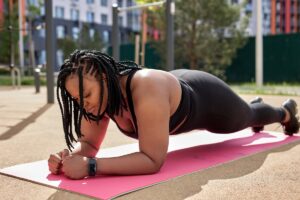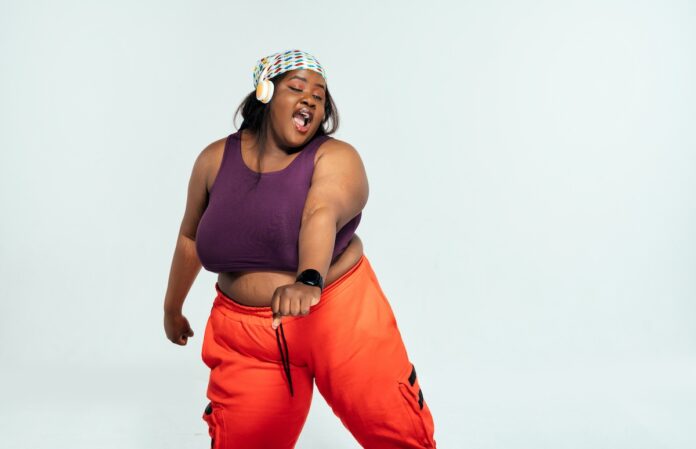The MVP (Most Valuable Partner) in your quest to lose weight and keep it off isn’t a magic pill but good weight-bearing exercises. Yes, some medical breakthroughs can help you shed pounds quickly, but weight-bearing exercises— physical activities where you work against gravity while standing or holding weights—are still needed to maintain the weight loss and keep your body strong.
The exercises, which include walking, jogging, dancing, planks, lunges, and squats, work directly on bones in the legs, hips, and lower spine to slow bone loss and offer the following benefits:
Muscle strength
These exercises help build and maintain muscle strength, which is essential for overall physical function and preventing injuries.
Balance and coordination
By challenging your body’s balance and coordination, weight-bearing exercises can improve your stability and reduce the risk of falls.
Cardiovascular health
Many weight-bearing exercises improve heart health, lower blood pressure, and reduce the risk of heart disease.
Bone health
Weight-bearing exercises can help strengthen bone density, reduce the risk of osteoporosis, and prevent bone loss as you age.
Remember that, as we get older, diminished bone density can lead to osteoporosis. The National Council on Aging finds that although Black women have a lower prevalence of osteoporosis overall, we experience worse outcomes after fractures caused by osteoporosis.
If we have lupus or sickle cell anemia, we are more likely to have a higher osteoporosis risk.
Ready to incorporate these exercises into your routine? Our fitness experts help you get into action:
The ultimate combo
DC-based certified personal trainer David Franklin reminds us that exercise is essential for strength, mobility, flexibility, and balance. Exercise cannot undo a bad diet. Too much exercise can increase one’s appetite and lead to overeating.
“When you lose weight, you lose muscle and fat. That is why you want to exercise while you are losing weight, Franklin explains
Remember that it is easy to put the fat back on. Muscle requires a lot more effort. Exercise and eat right for optimal health. Focus on your behavior, and the results will come”.
Mind over matter
It’s never too late to get up and get moving. And no, you don’t have to dive into a high-intensity workout, says celebrity fitness guru and lifestyle coach Kacy Duke. She adds, “I think it’s important to remember that weight-bearing exercises are not just about physical appearance, but about feeling empowered, resilient, and fully equipped to conquer life’s hurdles. So seize those weights, step into the gym, and reveal your strength – inside and out!”
Get moving
The experts agree that the best way to keep bones strong is to do both weight-bearing and muscle-strengthening exercises. Just as a muscle gets stronger the more you use it, a bone gets stronger and denser when you place demands on it. Two types of exercises can help you maintain or increase bone health: weight-bearing and resistance exercise. Combine walks with at least two 20-minute strength training sessions. (See below for how many squats and planks you need each week.)
Safety first.
Always consult your doctor before you start an exercise plan. Once they give you the OK, you can start with a walking program. Franklin adds, “I recommend consulting with a fitness professional if you are new to exercise and need guidance. Safety should be your primary goal. Beware of bodybuilder types, pushing extreme fitness and diet programs unless your goal is to compete as a bodybuilder”.
The gym doesn’t have to be a destination.
Gyms have equipment, group classes, pools, saunas, and personal trainers. Some people like gym environments, while others do not. There is nothing magical about a gym membership, Franklin, www.DLFfitness.com chuckles. His suggestions? Consider an online trainer, which you can find through word of mouth or watch videos on various platforms. Three for free: Nike Training Club on Netflix and Android and iOS apps; FITON-Free Fitness Workouts on Roku; and the National Institute of Aging’s 15-minute Workout for Older Adults on YouTube.
Challenge me.
New trends and techniques can always provide fresh challenges and benefits. Some recent developments in weight-bearing exercises include incorporating unstable surfaces like balance pads or exercise balls to engage more stabilizer muscles and integrating functional movements that mimic real-life activities for improved overall strength and mobility, says Duke, the owner of Kacy Duke Fitness Inc., and exploring different forms of resistance training such as using resistance bands, kettlebells, or suspension trainers for variety and versatility in workouts. It’s always a good idea to stay updated on the latest trends and techniques in weight-bearing exercise to keep your routine engaging and effective.
Make it fun.
Remember, exercise is a mood enhancer that helps soothe a racing mind. Duke, the OG of fitness trainers, says,” Embrace the challenge, conquer your doubts, and unleash the warrior within! Let’s lift, push through the sweat, and smash those goals with unwavering determination and heart!”
What are you waiting for?
Put your phone down, mute the television, and take ten minutes two to three times a week to run through this old-school set:
Squats.
Stand with your feet hip-width apart and hands on your hips. Bend your knees and lower yourself into a sitting position; at the same time, raise your arms straight out in front of you, level with your shoulders. Slowly straighten your legs to a standing position. Work your way up to three sets of eight to 10 reps per set.
Here, Britnee Babe demonstrates how to do a proper squat:
Then, when you are ready to level up to a challenge, check out Kacy Duke’s Squat Trifecta.
Plank.
Lie face down on the mat. Push up so you’re balanced on your elbows, forearms, and toes. Keep your back and body straight, your hips level, and slightly tuck in your tailbone. Breathe. Start by holding the position for 10 seconds and work up to 60 seconds.

@Fit and Fabulous with Maddy Owens demonstrates a few ways to do a plank.
Supported by an educational grant from Novo Nordisk Inc.







